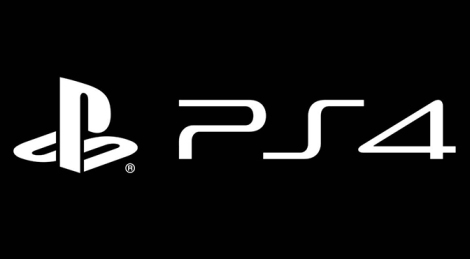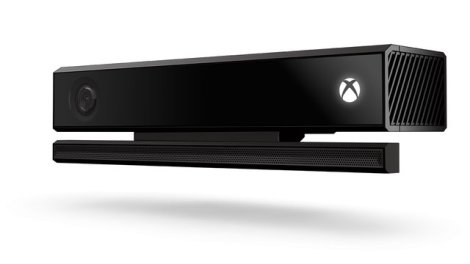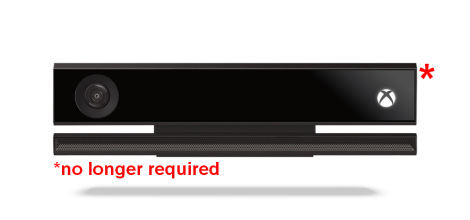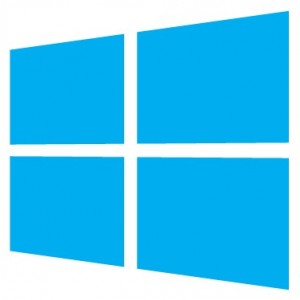Seriously, I’m surprised Microsoft didn’t call their new console the Xbox 180, because that’s what they’ve been doing since their next console’s big reveal. Which is both good and bad really. Good in the sense that they’re actually listening to their customers when it comes to what makes a deal breaker for them. Bad in the sense that this is where Microsoft’s game plan is always going to go on the gaming front, until outside forces (i.e. angry customers threatening sales) stop them and force a course correction.
First came the always-on DRM which outraged consumers – including America’s fighting men and women – causing Microsoft to turn an about face, dropping the always-on and check in once a day requirements. And now yesterday in their latest policy change, the Kinect sensor no longer has to be plugged in for the console to function.
The news came from Chief Xbox One Platform Architect Marc Whitten in an ongoing “Ask Microsoft Anything” segment on IGN, where he addressed users’ Kinect questions yesterday. When asked how “off” the sensor would be when plugged in, Whitten responded that it can be set to “totally” off in the console settings. He went on to state that the Kinect sensor will be optional in games where supplemental content calls for it, but naturally would be required for games that focus on Kinect functionality as the primary mode of gameplay:
You have the ability to completely turn the sensor off in your settings. When in this mode, the sensor is not collecting any information. Any functionality that relies on voice, video, gesture or more won’t work. We still support using it for IR blasting in this mode. You can turn the sensor back on at any time through settings, and if you enter into a required Kinect experience (like Kinect Sports Rivals for instance), you’ll get a message asking if you want to turn the sensor back on in order to continue.
Right – if the word “Kinect” is in the title of the game, you’re going to still need it to play. And this information is all thanks to a user that asked about the always plugged in requirement and what would happen if their sensor broke. Thanks, random user.
According to Whitten and the others who have spoken on Microsoft’s behalf in the past, the Xbox One is still designed to work with the Kinect, not only for gameplay of certain games but for SmartGlass, search, and UI navigation in general. So if you were planning on buying an Xbox One as your new “one” all-serving console, there’s still that stuff you can use it for.
So who knows what’s going on? Maybe they’re feeling threatened by the PS4 and are dropping restrictions to pull in those on the fence outside of the Microsoft die-hards. Maybe they’ve survived a crisis of conscience. Maybe their PR doesn’t want any perception issues after all the recent news and events about digital spying. Either way, this is another 180 from their former draconian policies that console gamers should be able to get behind. That’s not changing their sales strategy though. Even though we now know that the Kinect won’t be required to fire up a game on Xbox One, Microsoft still has no plans of selling the console without it at their $500 price point because of that UI design integration they described. Personally I think selling a non-Kinect version at maybe $400 would get them more sales, because I don’t care how much money you’ve got – $100 is $100. But that’s just me.
I said before publicly that I wouldn’t buy an Xbox One and would go the Sony PS4 route if those old policies from Microsoft remained in place. Now that they’re gone, it’s something I might actually consider.
You know, if I buy a new console at all.
Tushar Nene
Staff Writer
@tusharnene
OK so Microsoft’s been through some interesting times since E3 to now regarding the Xbox One. Seriously, I’m almost tired of typing the name of that console out anymore. First there was the DRM. Then there was the public outcry and backlash. Then they rolled it all back. Then some restructuring. Oh right, and the petitions (most likely of trollish origin) trying to bring back the DRM that Microsoft promised as “the future of gaming.”
Yeah.
So suffice it to say there’s still a lot of people whose living rooms haven’t been won over by the Microsoft show this summer (including me). If I do end up getting one of these next-gen consoles it’s going to be a PlayStation 4 and there’s a lot of people who agree with me. Microsoft knows this though, and they’ve decided to try a different angle – So maybe they can’t have your living room. That’s cool. How abut your office?
Recently on their Small Business support blog, The folks at Redmond are now marketing the Xbox One as the perfect unit for your small to mid-sized business. They threw up some decent points in their defense on a number of things that small and mid-size business can sometimes have some issues with. The first is videoconferencing. There’s not a lot of small businesses that can really swing expensive videoconferencing equipment, and the built in Skype allowing for multi-user chatting could make it attractive for communication. The addition of office web apps as well as plugging into SkyDrive for cloud storage has its draws too. It means documents and media (especially those powerpoint presentations we all love to give) can be pulled up and delivered using gestures instead of clickers or pointers. Given this, $499 isn’t a bad price point for a office machine.
This move and pitch makes sense if we go back to that Microsoft shuffle up for a second. The house the Gates built used to have very separate and very distinct rooms, each covering a product offering – Windows, Office, Mobile, services, etc. As an excerpt from Steve Ballmer’s restructuring memo:
“We are rallying behind a single strategy as one company — not a collection of divisional strategies.”
And that all kind of goes back to the whole “ecosystem” idea that they were pitching a few years ago – becoming a hotel as opposed to houses as it were, if you’ll allow me to make a board game analogue.
Hmm, an interesting thought after all… maybe I can buy an Xbox One and write it off as a work expense? Maybe multiplayer can count as team building…
Tushar Nene
Staff Writer
@tusharnene
 Backpedal (verb): to retreat or move backward.
Backpedal (verb): to retreat or move backward.
Last night the internet saw Microsoft go into full backpedal mode on their DRM practices for the upcoming Xbox One in a post on their site titled “Your Feedback Matters – Update on Xbox One.” The post was courtesy Don Mattrick, the President of Microsoft’s Interactive Entertainment Business unit, and seemed to address a score of concerns gamers had following the product launch event and E3. Citing that his people had heard directly from many fans (read: pages upon pages of ASCII middle fingers on their Facebook page), he announced that DRM practices for the Xbox One would be somewhat rolled back to how they are for the Xbox 360. Here were the main hits:
An internet connection will not be required to play offline Xbox One games – After a one-time system set-up with a new Xbox One, you can play any disc based game without ever connecting online again. There is no 24 hour connection requirement and you can take your Xbox One anywhere you want and play your games, just like on Xbox 360.
Trade-in, lend, resell, gift, and rent disc based games just like you do today – There will be no limitations to using and sharing games, it will work just as it does today on Xbox 360.
This means that if I want to lend my friend a game I just need to give them the disc. Things will mostly roll on like it currently does for the Xbox 360 generation. It’s a good thing that Mattrick and his crew rolled these back if for no one’s sake than their own too, because things were starting to look pretty grim for team Microsoft on the gaming front. Their licensing model was convoluted and strange for borrowing discs and game rentals. Military personnel were calling it “a sin against all service members.” And then there was Sony, their main competition for the last couple generations of gaming consoles, absolutely drilling them on their policies with not only their own business practices but veiled commercials targeting Microsoft to the delight of all watching. I mean we all remember this video on sharing games from PlayStation’s YouTube channel, right?
Did anyone else get a very thumbs up / thumbs down Gladiator vibe from that whole thing? I sure did, and it was hilarity that won in the arena.
 Sony had the pole position in the console press conferences, showing off the PS4 hours after Microsoft was shilling the One. After the disappointment of many after the Xbox One show, Sony had the opportunity to say “Hey guys, don’t worry! We’re still here to save you!” And it worked. Like gangbusters, kids. Sony offered a unit that cost less, had better hardware specs, nixed the DRM, had no requirement for an always on, always listening camera, and didn’t charge $60 a year for online services. How can you lose with that kind of show?
Sony had the pole position in the console press conferences, showing off the PS4 hours after Microsoft was shilling the One. After the disappointment of many after the Xbox One show, Sony had the opportunity to say “Hey guys, don’t worry! We’re still here to save you!” And it worked. Like gangbusters, kids. Sony offered a unit that cost less, had better hardware specs, nixed the DRM, had no requirement for an always on, always listening camera, and didn’t charge $60 a year for online services. How can you lose with that kind of show?
So was it Sony putting pressure on Microsoft by just being themselves or was it truly the Xbox team listening to their fans. “We have listened and we have heard loud and clear from your feedback that you want the best of both worlds,” Mattrick said on the Xbox Wire. Maybe it should have read “Pleas guys, don’t leave us for Sony.” It was probably a combination of both. And that’s what’s awesome about the whole thing. What this showed was that the gaming industry can still be affected by competition and vox populi – even though companies run on margin and greed, that they can shift gears when they previously said they can’t when their dollars are threatened. It’s the beauty of the system – a company can shift gears once they realize that consumers aren’t going for what they’ve got. And to the conspiracy theorists, no, I don’t think this was a planned stunt from the get go to come off harsh then pick up the image of “listening to the fans.” That strategy would have only worked if they had a PS4-killer level function in the Xbox One, which they didn’t. In all I’m glad they rolled back the DRM, but I think the damage is still done.
And that’s my opinion regardless of the borderline insane ramblings of Cliffy B, who claims that it was Sony alone, and not the “whiny internet” that forced Microsoft’s hand.
 Sony still has a lot of those advantages listed above going for them. The price of the PS4 is still about $100 less than the One, and that also comes with no yearly payments for online services. And money is always a factor. It was part of the reason for the success of Nintendo’s first Wii console after all. But the other disadvantage they still maintain is the Kinect requirement. The Kinect still has to be plugged in and powered on for the console to function, keeping my privacy concerns right where they are. Enough to make the fact that they rolled back the DRM, while fundamentally good, also completely moot. I still need more than “I promise Nene, I’m not listening” to make it happen for me.
Sony still has a lot of those advantages listed above going for them. The price of the PS4 is still about $100 less than the One, and that also comes with no yearly payments for online services. And money is always a factor. It was part of the reason for the success of Nintendo’s first Wii console after all. But the other disadvantage they still maintain is the Kinect requirement. The Kinect still has to be plugged in and powered on for the console to function, keeping my privacy concerns right where they are. Enough to make the fact that they rolled back the DRM, while fundamentally good, also completely moot. I still need more than “I promise Nene, I’m not listening” to make it happen for me.
Final verdict: Sony still has the upper hand.
Tushar Nene
Staff Writer
@tusharnene













